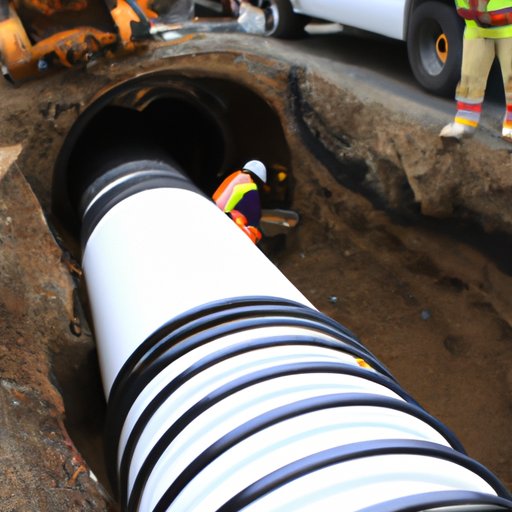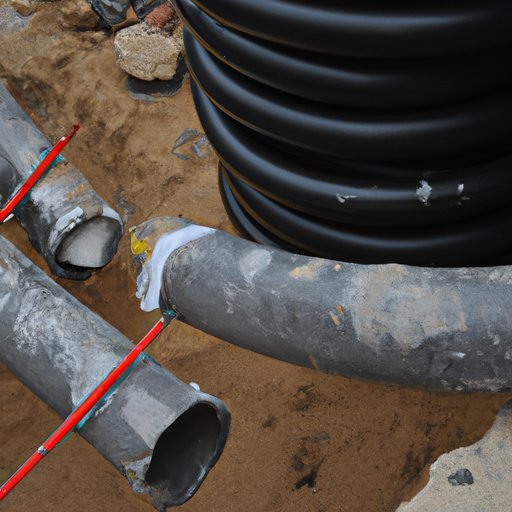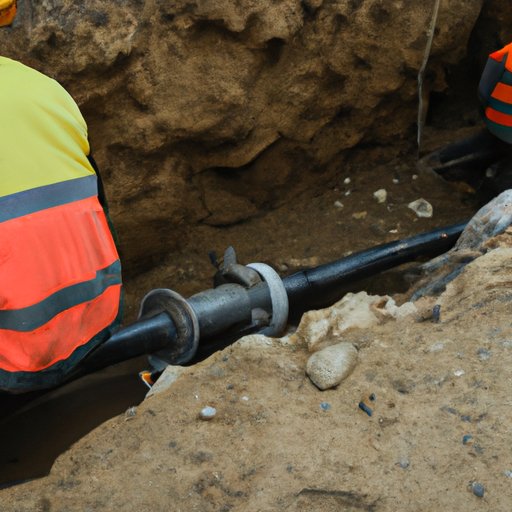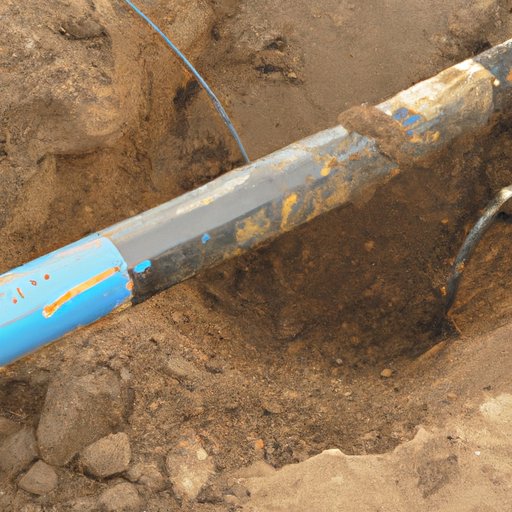Introduction
Trenchless technology is a rapidly growing trend in the construction and excavation industry, offering an array of benefits that are transforming the landscape of infrastructure projects. But what exactly is trenchless technology? And why is it so important?
What is Trenchless Technology?
Trenchless technology is a type of construction or excavation that involves minimal disruption to existing infrastructure. It is used to install, repair, or replace underground pipes and utilities without the need for large-scale excavation. Instead of digging a long, deep trench, trenchless technology utilizes specialized equipment and techniques to access and complete the project with minimal disruption to the surface.
Benefits of Trenchless Technology
The primary benefit of trenchless technology is cost savings. By avoiding the need for extensive excavation, the overall cost of a project can be significantly reduced. In addition, trenchless technology is also more time efficient than traditional methods, as the process requires less labor and fewer materials. Finally, trenchless technology minimizes disruption to existing infrastructure, allowing for a quicker, safer, and more efficient installation or repair.

How Trenchless Technology is Changing the Landscape of Infrastructure
Trenchless technology can be used for a variety of applications, including water and sewer lines, gas lines, electrical cables, and telecommunications systems. There are three main types of trenchless technology: horizontal directional drilling (HDD), pipe bursting, and cured-in-place pipe lining (CIPP).
Horizontal Directional Drilling (HDD) is a method of installing new pipes and utilities by drilling a hole through the ground, which eliminates the need for large-scale excavation. HDD is often used for long-distance installations, such as for pipeline construction, and can be used to install both rigid and flexible pipes.
Pipe Bursting is a technique used to replace existing pipes without the need for excavation. The process involves inserting a device into the existing pipe and then using mechanical force to break it apart while simultaneously replacing it with a new pipe. This method is often used for sewer line replacement, as it allows for the installation of larger diameter pipes.
Cured-in-Place Pipe Lining (CIPP) is a method of repairing damaged pipes without the need for excavation. The process involves inserting a liner into the existing pipe and then using heat or chemicals to cure it in place. CIPP is often used for sewer line repairs, as it can restore structural integrity without the need for costly excavation.
Trenchless technology is being utilized all over the world for a variety of projects, from large-scale pipeline construction to small-scale sewer line repairs. Some examples of successful trenchless projects include the installation of a 5.5km pipeline in Hong Kong, the repair of a 4.5km sewer line in London, and the replacement of a 2.5km water line in Los Angeles.

A Guide to Understanding Trenchless Technology
When considering a trenchless project, there are several steps to planning a successful project. First, an assessment needs to be conducted to determine the type and size of pipe or utility needed, as well as the particular trenchless method that should be used. Second, the site needs to be surveyed to ensure the proposed route is feasible. Third, the soil conditions need to be evaluated to determine the best drilling or bursting technique. Finally, the project needs to be designed and engineered to ensure safety and accuracy.
In addition to the planning process, there are several factors that can affect the success of a trenchless project. These include the type of soil being drilled or burst, the depth and length of the pipe or utility being installed, the size of the drill or bursting head, and the amount of water being used. All of these factors must be taken into consideration when planning a trenchless project.

The Advantages of Utilizing Trenchless Technology
In addition to cost savings and time efficiency, there are several environmental benefits associated with trenchless technology. Because the process requires minimal disruption to existing infrastructure, it reduces the amount of soil and debris that needs to be removed or disposed of. This helps to reduce the environmental impact of construction and excavation projects.
Trenchless technology is also safer for workers, as the process eliminates the need for manual excavation and reduces the risk of injury. The use of specialized equipment and techniques also increases the accuracy and precision of the job, minimizing the chance of errors or mistakes.
The Future of Trenchless Technology in Construction and Excavation
As the need for infrastructure projects continues to grow, so too does the demand for trenchless technology. One of the emerging trends in the industry is the use of automated machines, which allow for faster and more accurate installations and repairs. In addition, the development of remote sensing technology is helping to improve the accuracy of surveys and assessments.
Looking ahead, it is likely that trenchless technology will continue to evolve and become more advanced. As the technology becomes increasingly sophisticated, it will open up new opportunities for cost savings and efficiency, as well as improved safety and environmental sustainability.
Conclusion
Trenchless technology is quickly becoming the preferred method of construction and excavation, offering a range of benefits that are transforming the landscape of infrastructure projects. From cost savings to time efficiency, trenchless technology provides a safe, reliable, and environmentally friendly solution for a variety of applications. As the technology continues to evolve, it will no doubt continue to revolutionize the way we build and repair our infrastructure.
As such, it is important to understand the basics of trenchless technology and the steps required for a successful project. With the right knowledge and expertise, trenchless technology can be an invaluable tool for any construction or excavation project.
(Note: Is this article not meeting your expectations? Do you have knowledge or insights to share? Unlock new opportunities and expand your reach by joining our authors team. Click Registration to join us and share your expertise with our readers.)
